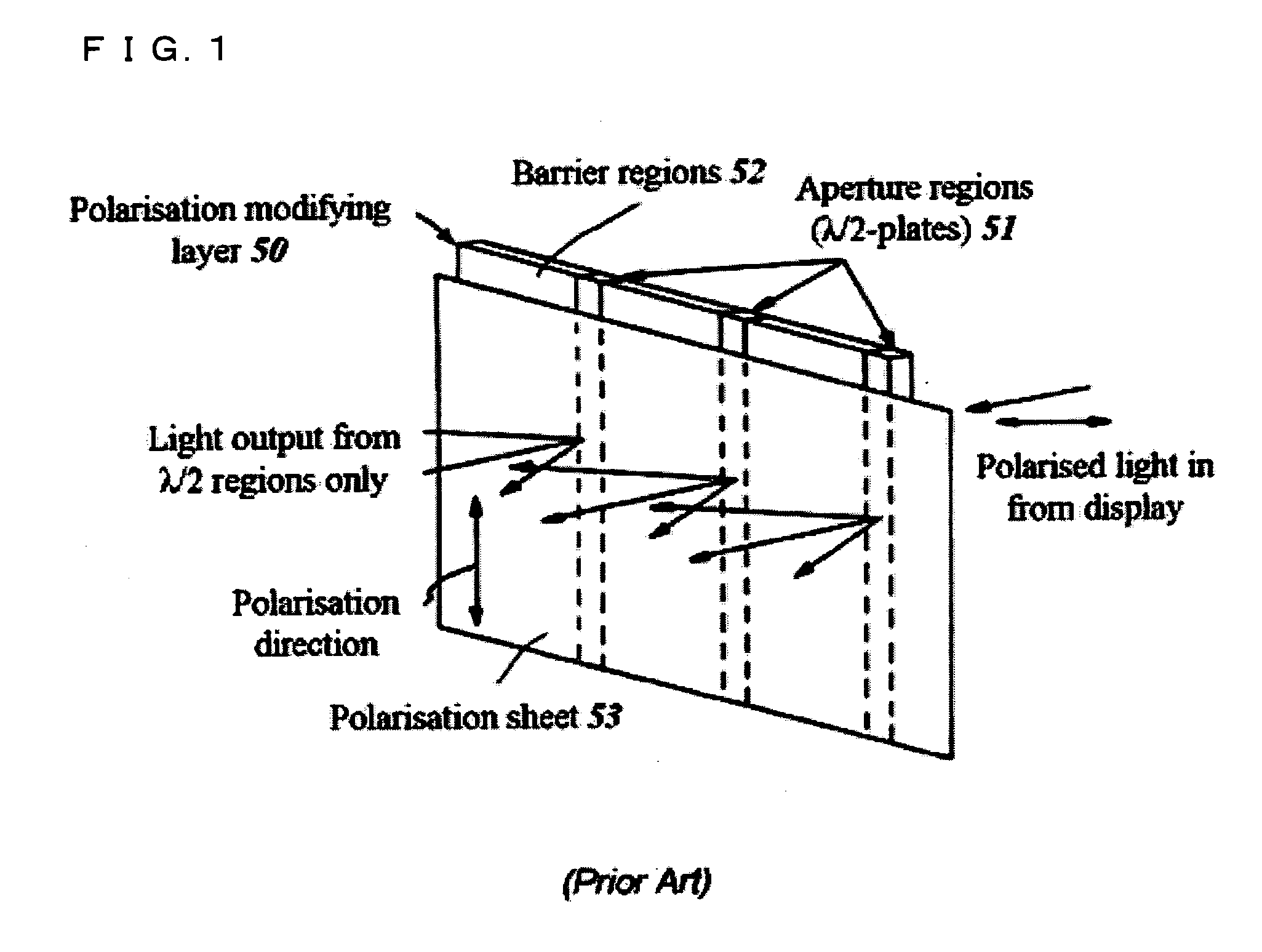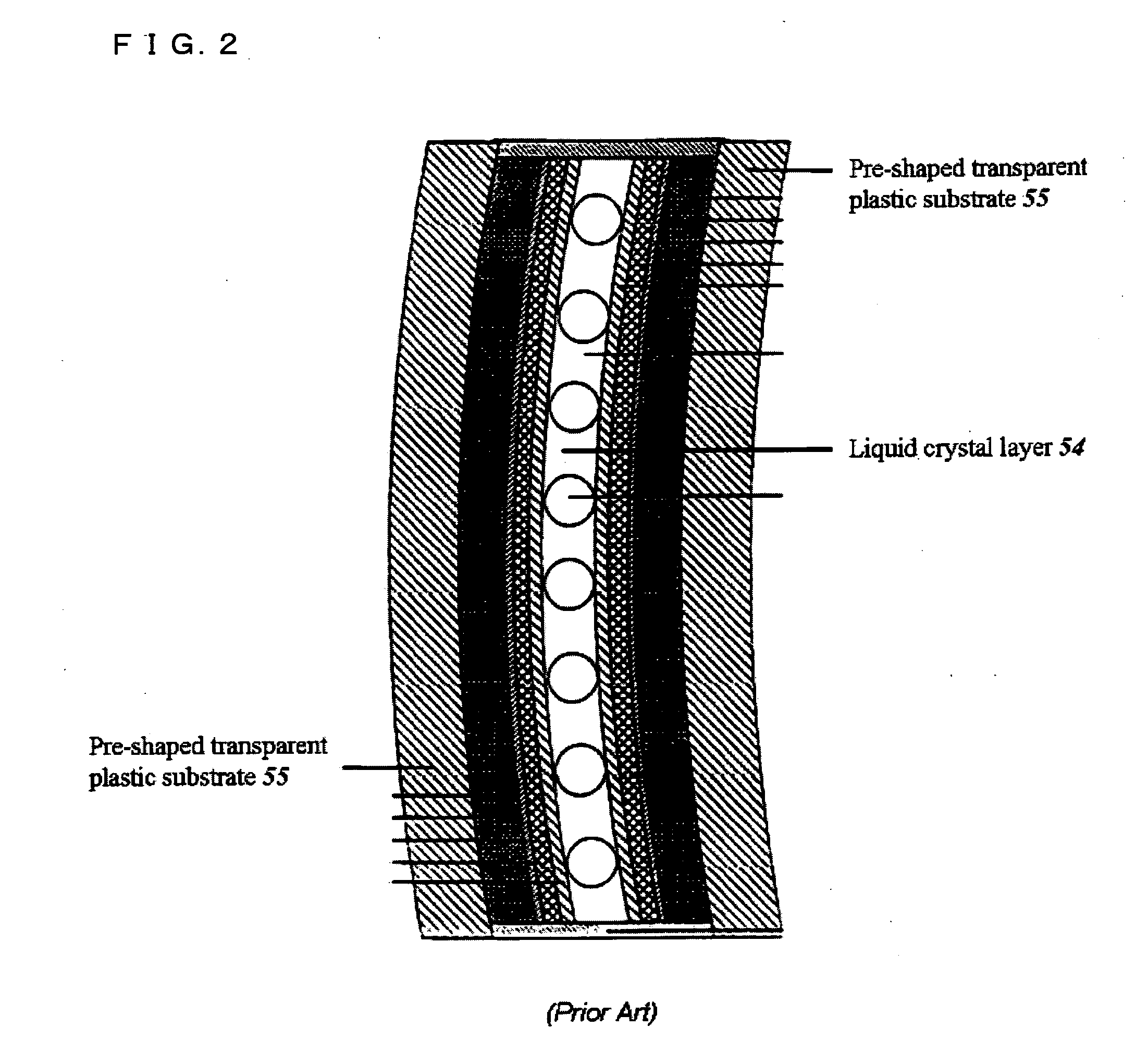Optical system and display
a technology of optical system and display, applied in the field of optical system, can solve the problems of reducing the aesthetics of such displays, and producing images that do not appear flat, and achieve the effect of low cos
- Summary
- Abstract
- Description
- Claims
- Application Information
AI Technical Summary
Benefits of technology
Problems solved by technology
Method used
Image
Examples
first embodiment
[0105]In the first embodiment and all following embodiments based on a similar configuration, details and configuration of the display system may be varied in a number of ways so as to optimise the performance for different applications.
[0106]For example, as described above, the partial mirror 3 reflects approximately 50% of light incident upon it and transmits approximately 50%. This leads to the final curved image 13 (shown in FIG. 7) seen by the viewer 8 having a brightness which is approximately one-quarter of its original brightness as displayed by the electronic display 1. Although this brightness value of one-quarter is the highest achievable with the system configuration of this embodiment, it will be appreciated that, for further embodiments of this invention, the optical properties of the partial mirror 3, for instance the reflectivity / transmissivity ratio, may be varied to select the relative brightness of the displayed image. In other words, the partial mirror 3 is desig...
second embodiment
[0122]the invention is shown in FIGS. 14a and 14b. This embodiment provides the capability of optionally utilizing the electronic display 1 as a standard 2D display or as a curved display. For example, such a capability may be of benefit for large-area advertising displays, which may operate like common conventional displays in the 2D mode when displaying text information or common banners but which may take advantage of an enhanced aesthetic appearance by switching to the “curved mode” when trying to catch the attention of viewers for a particular advertising video.
[0123]As illustrated in FIGS. 14a and 14b, the system uses the same components as described in the first embodiment. In addition, a switchable half-wave (“switchable λ / 2”) plate 21 is disposed between the input linear polariser 9 and the first quarter-wave plate 10. Such a switchable half-wave plate 21 may comprise a liquid crystal cell which is capable of being switched on and off electrically. When switched on, the pla...
third embodiment
[0137]the invention is illustrated in FIGS. 15a and 15b. The only element in this embodiment which is not also described in the previous embodiments is a cholesteric reflector 22. This is a liquid-crystal layer with a natural helical structure which causes it to reflect one circular polarisation state while transmitting the other. Such reflectors are well-known and are disclosed in standard books on liquid crystal technology, for example the book by Lueder mentioned previously. Such reflectors may be made so that they may be switched off by the application of an applied electric field, or may simply be fixed and unswitchable. If they are left unswitched, then the liquid crystal layer may be fixed in place by polymerisation of the liquid crystal molecules themselves or by polymerisation of an accompanying monomer.
[0138]In the display shown in FIGS. 15a and 15b, the first partial reflector comprises a partial mirror 3 whereas the second partial reflector comprises a fixed cholesteric ...
PUM
 Login to View More
Login to View More Abstract
Description
Claims
Application Information
 Login to View More
Login to View More - R&D
- Intellectual Property
- Life Sciences
- Materials
- Tech Scout
- Unparalleled Data Quality
- Higher Quality Content
- 60% Fewer Hallucinations
Browse by: Latest US Patents, China's latest patents, Technical Efficacy Thesaurus, Application Domain, Technology Topic, Popular Technical Reports.
© 2025 PatSnap. All rights reserved.Legal|Privacy policy|Modern Slavery Act Transparency Statement|Sitemap|About US| Contact US: help@patsnap.com



